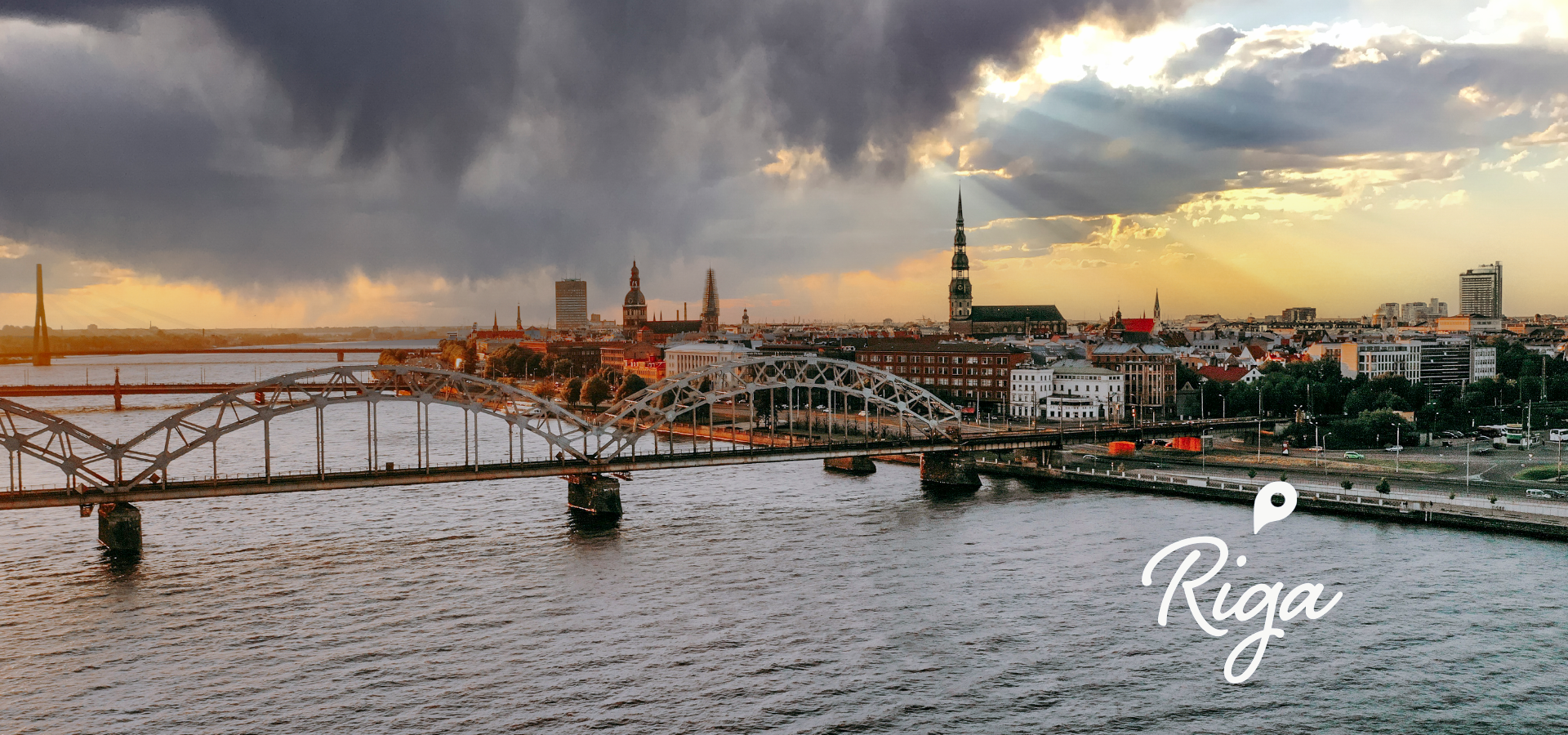Latvia’s historic capital Riga stretches along both sides of the broad Daugava River. Founded in 1201 by Bishop Albert of Livonia, its picturesque center on the right bank of the river features narrow winding cobbled lanes, with over 500 buildings in different architectural styles, from medieval to modern.

Surrounding streets hold more architectural treasure: During the late 19th and early 20th centuries, Riga underwent a financial boom, and with this arrival of affluence, the area surrounding the old town was soon filled with imposing and highly decorative houses. In the early 1900s, Riga became the European city with the greatest concentration of Art Nouveau buildings. Today, most have been restored to their former glory.
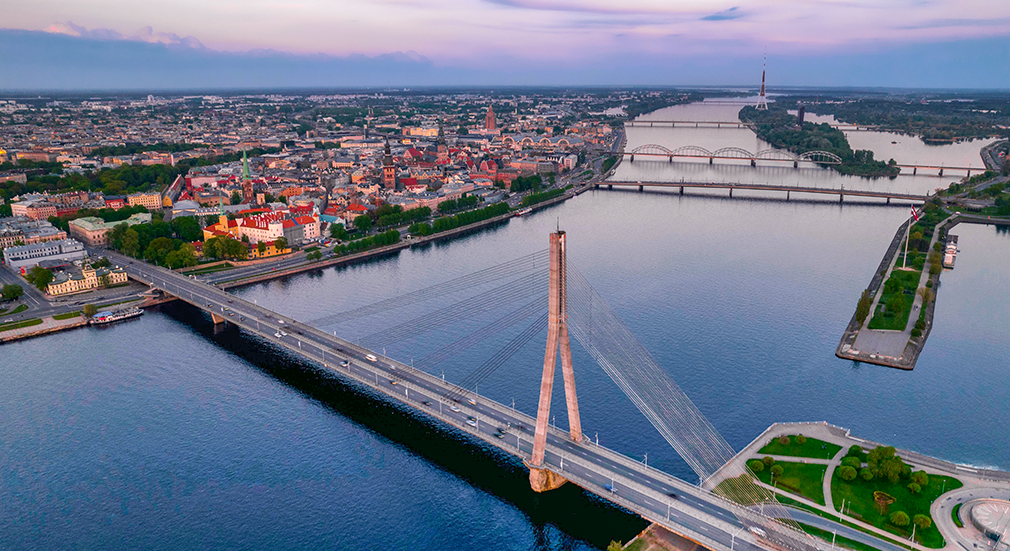
Riga came under Soviet rule in 1940, before being occupied by the Nazis during World War II. After the war, Riga returned to Soviet rule until its independence in 1991. Buildings, monuments, and museums serve as a record of this troubled period.
This photogenic city has a truly rich and complex history that is a delight to discover. Broad streets, plentiful green spaces, and a lack of hills make Riga easy to explore on foot. A fabulous selection of local and international food and drink offerings is available to fuel the most energetic visitor. Read on for our top picks for a visit to this Baltic gem.
Where to Stay in Riga
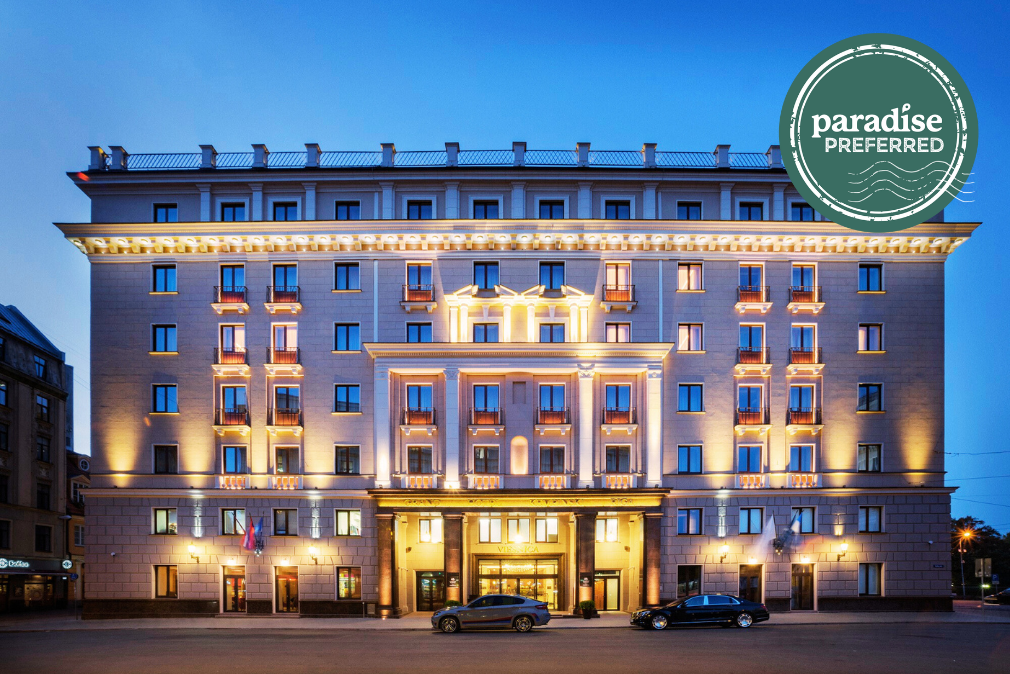
The Palatial One
Close by the Latvian National Opera House in the very heart of Riga, the Grand Hotel Kempinski Riga was voted “Latvia’s Leading Hotel” at the World Travel Awards 2024. This stunning property claims an important place in mixology history: In 1967, its head bartender, Jāzeps Arbidāns, is said to have mixed the first-ever alcoholic cocktail to be served both in Riga and the whole of the Soviet Union.
Located in a palatial 19th-century building, resplendent with marble, pillars, and magnificent staircases, this big hitter is worth splashing out for. In addition to luxuriously appointed rooms, guests can enjoy all-day dining, a rooftop restaurant, a bar, a spa, and a cigar lounge.
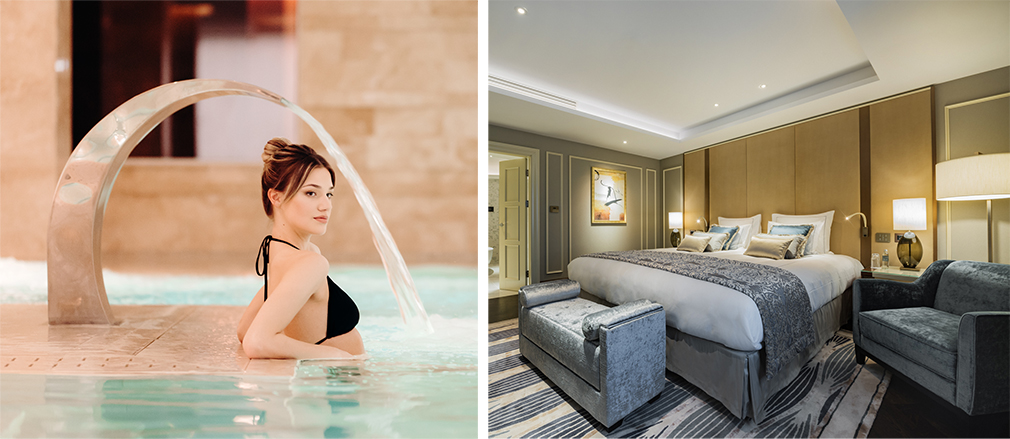
The Cold War One
The Radisson Blu hotel stands out for its height—at roughly 20 stories high, it’s one of the tallest landmarks in the city. But it has another unique feature: its Cold War history. During Soviet occupation, the hotel building was designed for delegations of international and Soviet visitors. It was managed by the USSR State Committee for Foreign Tourism and there are rumors that the hotel was wiretapped to allow the Cheka (the local version of the KGB—more about them later) to monitor foreign influences. Today the building has evolved into a comfortable and stylish hotel, centrally positioned and perfect for exploring the many Art Nouveau buildings in the area.
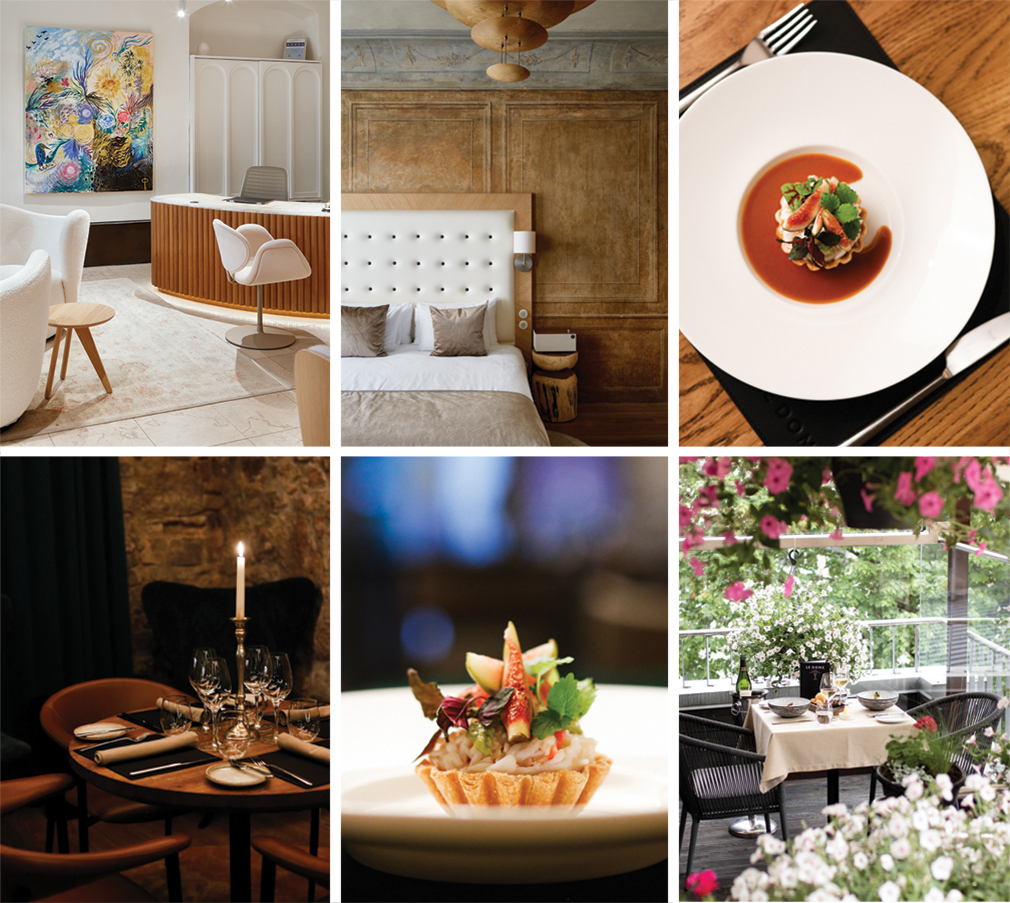
The Boutique One
Tucked along one of the old town’s delightful cobblestone streets, just off the main cathedral square, parts of the small but perfectly formed 15-room Dome hotel date back to the 17th century, and many original features remain. A broad wooden staircase in the lobby is over 400 years old, with painted details on the walls surrounding it, restored to their original glory. Bedrooms are beautifully designed and decorated in muted colors. The overall atmosphere is peaceful, making this gorgeous property a perfect haven from the popular tourist streets just outside.

The Budget One
Hotel Gutenbergs has an interesting backstory. Once the premises of a newspaper printing company formed in 1880, the property’s name honors Johannes Gutenberg, inventor of the first printing press on the continent. This family-run hotel offers particularly warm and friendly service. The décor is vintage, and rooms are furnished in a local style. Some of the older parts of the building offer rooms with period features like ceiling beams, and several offer views of the cathedral. It’s best-kept secret is the top-floor restaurant and terrace. This incredible space offers wonderful views of the old town church spires.
The Literary One
Grand Poet Semarah hotel could have its guests penning verses, inspired by the fairytale turret at the edge of the building, which gives corner rooms a panoramic view over the neighboring park and towards the Freedom Monument. This luxurious design hotel, with its large high-ceilinged rooms, offers guests plenty of space to relax. For those seeking a little pampering, a well-appointed spa offers a range of treatments to soothe bodies tired from days spent sightseeing. This striking property is close to the city’s most popular shopping streets and only a ten-minute walk to the old town.
Where to Eat in Riga
Best for Brunch
One of the most affluent areas of Riga can be found on an intriguing urban island. Accessed from the impressive Vanšu suspension bridge which spans the Daugava river, UNESCO World Heritage Site Kipsala island is home to many traditional wooden houses—some positively mansion-like. It also offers a museum celebrating local hero Žanis Lipke, who built a bunker under his house where he concealed Jewish refugees during the Second World War.
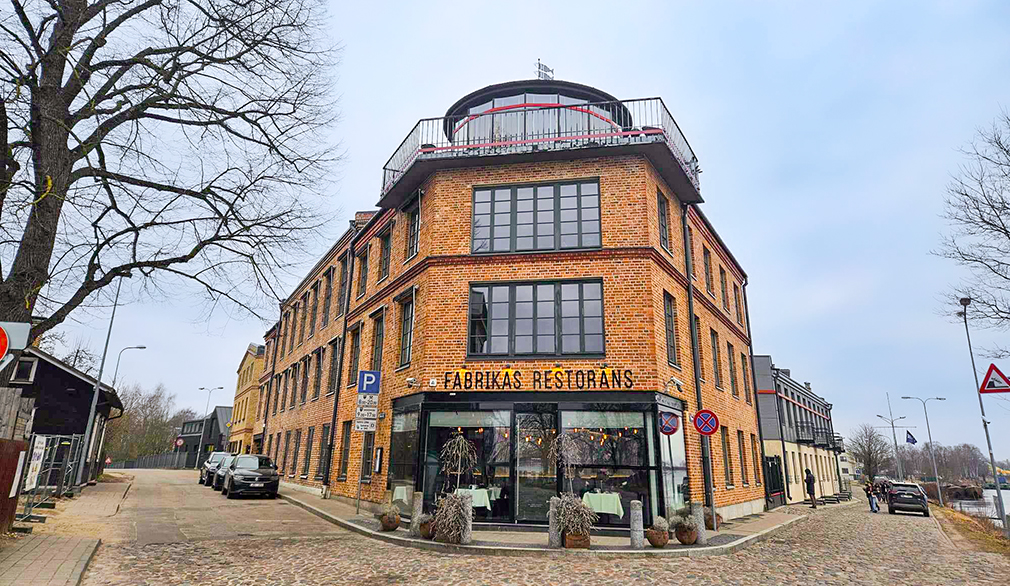
In the middle of the island is an alluring-looking restaurant with a name—Fabrikas—that recalls the building’s past as a gypsum factory. With magnificent views across the river to the old town, Fabrikas offers lunch and dinner Tuesday through Sunday, but it’s the brunch menu on weekends that is a must-do. In summer, there’s a gorgeous floating terrace where you can dine on the water while you count the spires of the old town on the opposite bank.
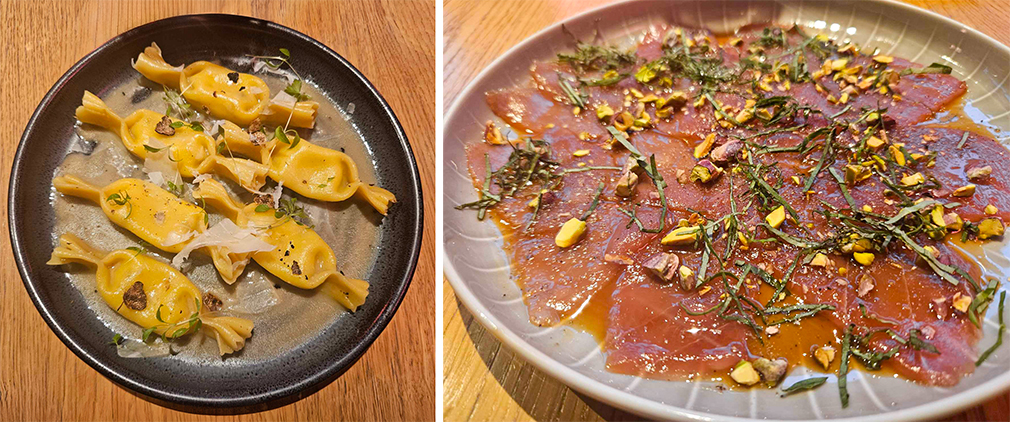
Best for Fashionistas
Winner of a Michelin Bib Gourmand, an accolade signifying good food at a good price, the chic supper spot Snatch is in the heart of the Art Deco district and is a place to be seen. With a bright, modern interior filled with neon hues and graffiti art, the décor makes a perfect backdrop for a menu blending Italian classic cuisine with Asian finesse. Think homemade pasta dishes, tuna crudo with a touch of ponzu, and a minimalist, refined presentation. It’s great for cocktails and a wonderful Italian-centric wine list. Pro tip: Dress up, as it’s a very glamorous spot.
Best for Dates
Whitehouse restaurant isn’t going to win any prizes for innovative naming—it’s housed in a two-story elegant white house, with a large terrace that twinkles with fairy lights. It should, however, win a prize for atmosphere and romance. It’s a stunning dining space that is perfect year-round. In Riga’s chilly winters, take a seat by the full-length glass windows and enjoy views over Vērmanes Park while keeping cozy. In summer, head to the terrace and enjoy the long nights. Listed in the Michelin guide, the menu features elevated examples of European cuisine with some international touches.
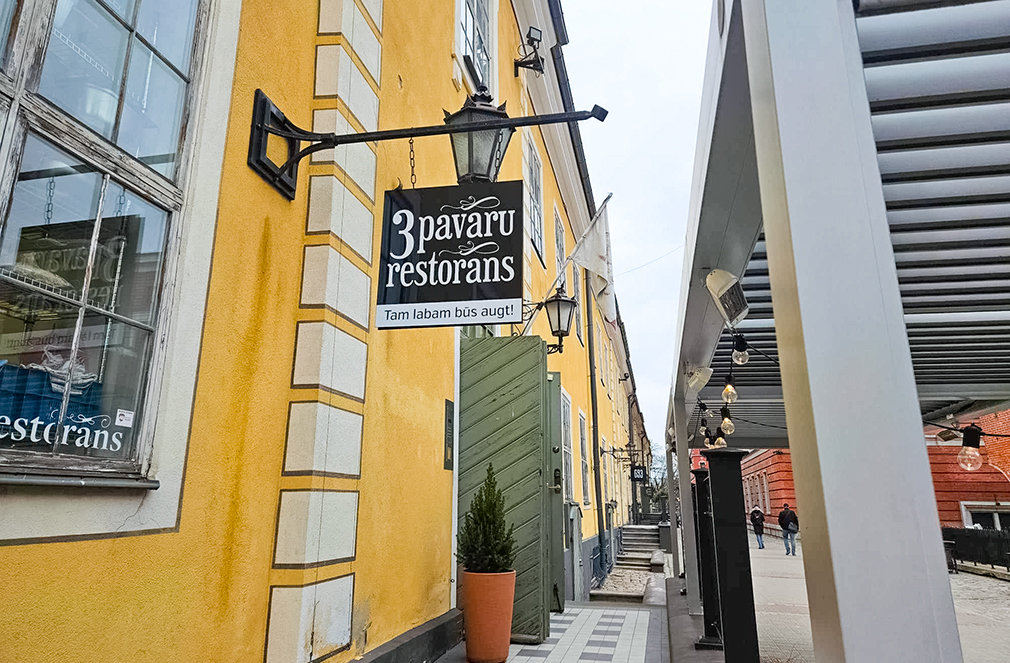
Best for Latvian Cuisine
Hungry for more? Head to another gorgeous location, this time within the bright yellow walls of Jacobs Barracks in the old town. 3PAVARI (known in English as 3 Chefs) offers guests all the hearty and delicious elements of traditional Latvian cuisine with some fancy flourishes. Enjoy dining in the carefully restored 18th-century building with views of the Powder Tower as you work your way through a six-course tasting menu, or pick from local delicacies like pike perch or venison served with potato doughnut from the a la carte options.

Best for Vegans, Veggies, and Street Food Fans
Agenskalns Market, on the left side of the river, is the largest and oldest market in the neighborhood. It underwent a recent renovation and reopened in May 2022. The market has national cultural monument status and holds regular educational and cultural events in cooperation with community organizations.
On the second floor, illuminated by two enormous glass chandeliers, stand rows of international food stalls, bars, a community kitchen, and plenty of seating. Plant-based offerings (including dedicated veggie burger stall Furious Foods) ensure that in a traditionally meat-centric country, vegetarians and vegans have options. There’s an international flavor here, too: East-Asian-inspired stuffed bao rub shoulders with Georgian delicacies, sushi, and kebabs. Pop downstairs afterward to browse the many stalls selling vegetables, fruits, bread, and kitchen essentials.
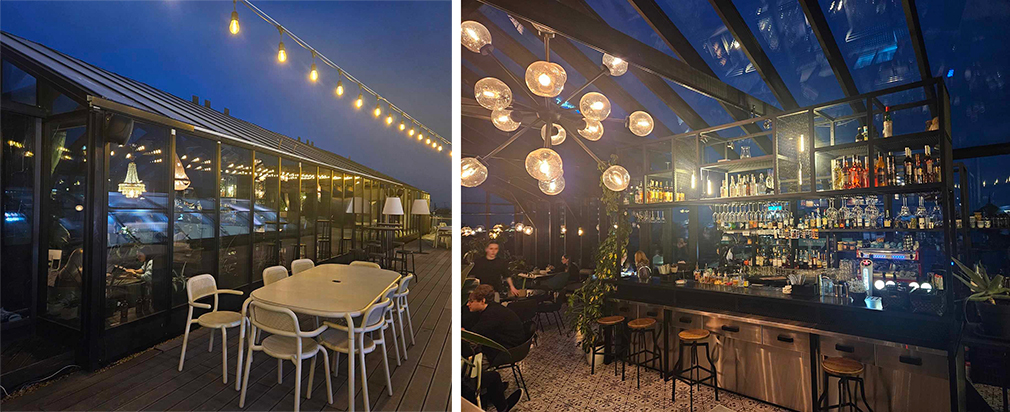
Where to Drink in Riga
Best for Cocktails
Head for the sky or go underground for a great cocktail at either of these centrally located bars. Herbary is on the top floor of a shopping mall, and comprises a glass room filled with plants and an extensive list of classic fun cocktails, bar snacks, and more substantial plates to soak up the delightful drinks. Gimlet lies at the opposite end of the altitude spectrum, in a basement on Baznicas Street. The cocktail list changes according to the seasons, as they make a point of using local plants and botanicals in their impressive, Nordic-inspired mixed drinks.
Best for Natural Wine
Lowine, located in the embassy district, is a relative newcomer to the Riga drinks scene. Its focus is on low-intervention wines from artisan producers. Unusually for a wine bar, it opens for breakfast, offering a range of pancakes, quiches, and toasts to accompany breakfast bubbles. It stays open until 11 p.m. and has dinner options, too.
Best for Beer with a Traditional Atmosphere
Folkklubs Alla Pagrabs is a Riga institution, right in the center of the old town. Opening each evening at 4 p.m., it gets going around 9 p.m., when the live music kicks off. This is a proper Latvian tavern, with more than 30 local beers on tap. It’s rowdy and fun—get ready to dance.
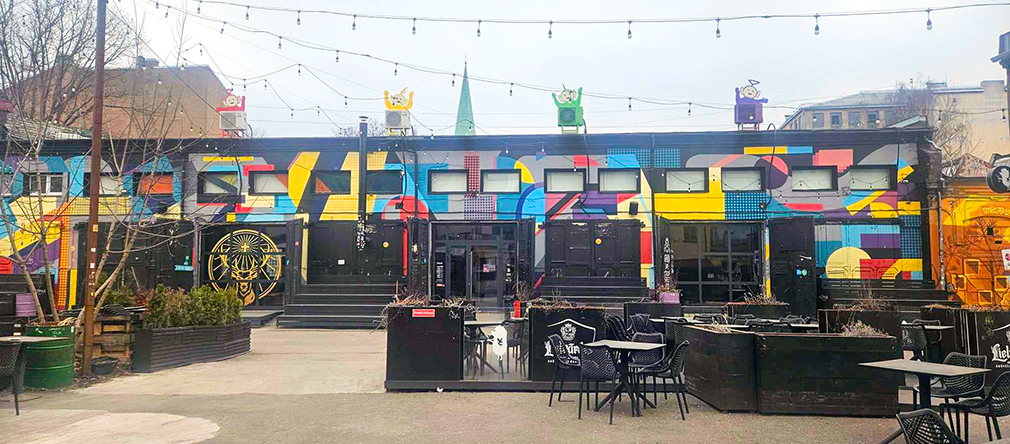
Best for a Long Night
Tallinn Street, lined with galleries and local designers, lures the fashion-conscious to the north of the city. Concealed behind a wall on the right-hand side of the street is Tallinn Street Creative Quarter, a collection of small buildings in a former emergency car depot that are bright with colorful street art and surround a large square with tables. Bars, restaurants, pubs, food stalls—this place has everything for a full evening out without having to stray too far. It’s wild and a little out of the way, but worth the trip.
Where to Shop in Riga
Best for Souvenirs
The old town is awash with small gift shops offering mementos of the city, and it’s easy to take in on a wander through its meandering streets. But for the finest souvenirs, head to Mūsmāja. This generously sized store has an elevated class of craft; think artisan jewelry, pretty knitwear, linen, and ceramics made in Latvia by local artisans. It’s not cheap, but Mūsmāja stocks quality items that will become beloved keepsakes.
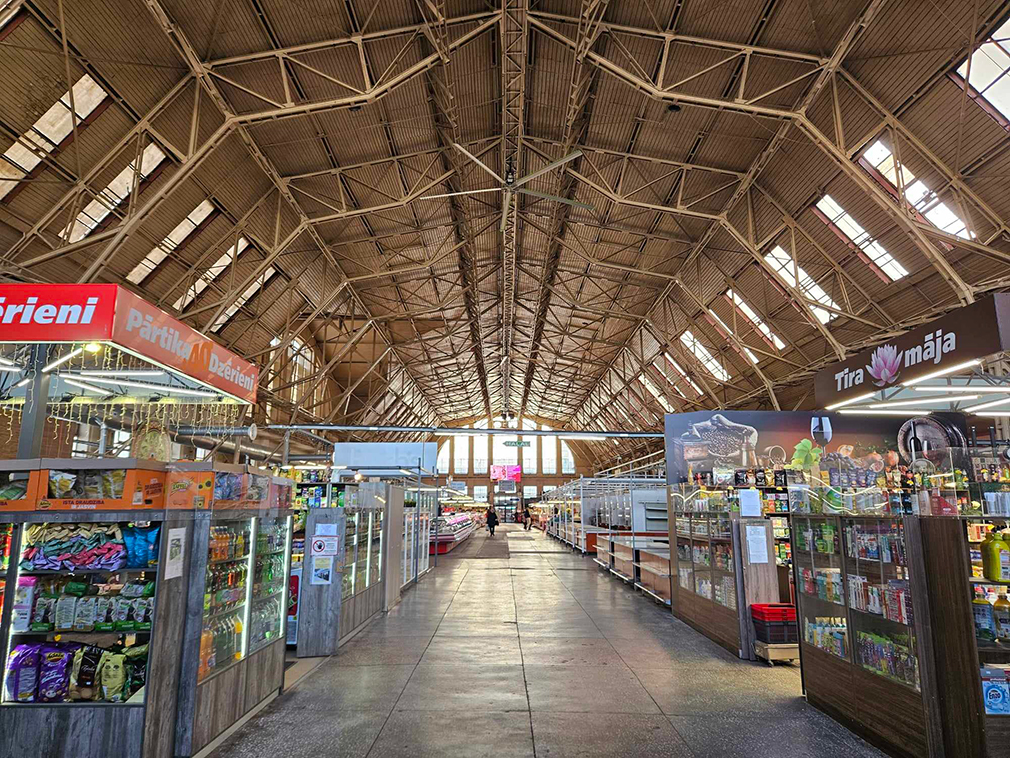
Best for Big Shoppers
Riga’s central market is the largest in all of Europe and is located on the other side of the railway tracks from the old town. Housed in huge aircraft hangars that were once home to zeppelins, stalls sell local produce of all descriptions to residents and tourists, ranging from pig snouts to knitted bedroom slippers. Try to visit in the morning when it’s at its most buzzy, and allow plenty of time to explore—this place is absolutely huge.
Best for Vintage Fans
On fashionable Tallinn Street, Northern Grip is a smart store with vintage clothing, accessories, and jewelry, all in wonderful condition. Looking for a trip down memory lane or to find something truly one of a kind? This is where you can feel good about your sustainable choices as you shop.
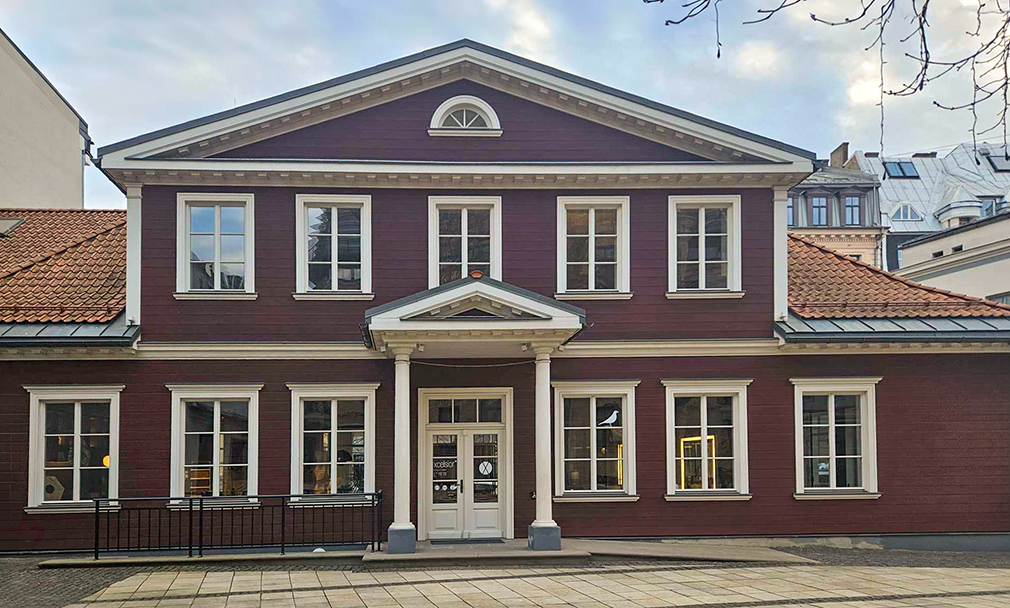
Best for Browsers
Berga Bazars was the first modern shopping center to be built in Riga at the end of the 19th century. It was designed by Konstantīns Pēkšēns and inspired by Istanbul’s grand bazaar, as well as by structural and aesthetic elements of shopping passages in the West. Flanking the charming Bergs hotel, this bijou bazaar is perfect for a stroll and a browse. Wander through the various upscale stores, peruse offerings from local fashion designers, then take a break at one of the shopping arcade’s tempting bars or cafes.
Best for Bargain Hunters
Krāminieks is a weekly flea market every Sunday on the grounds of Agenskalns market. Once a month, bargain hunters can head to the second floor of the market pavilion to check out the fashion and design fair TURBO Vintage.
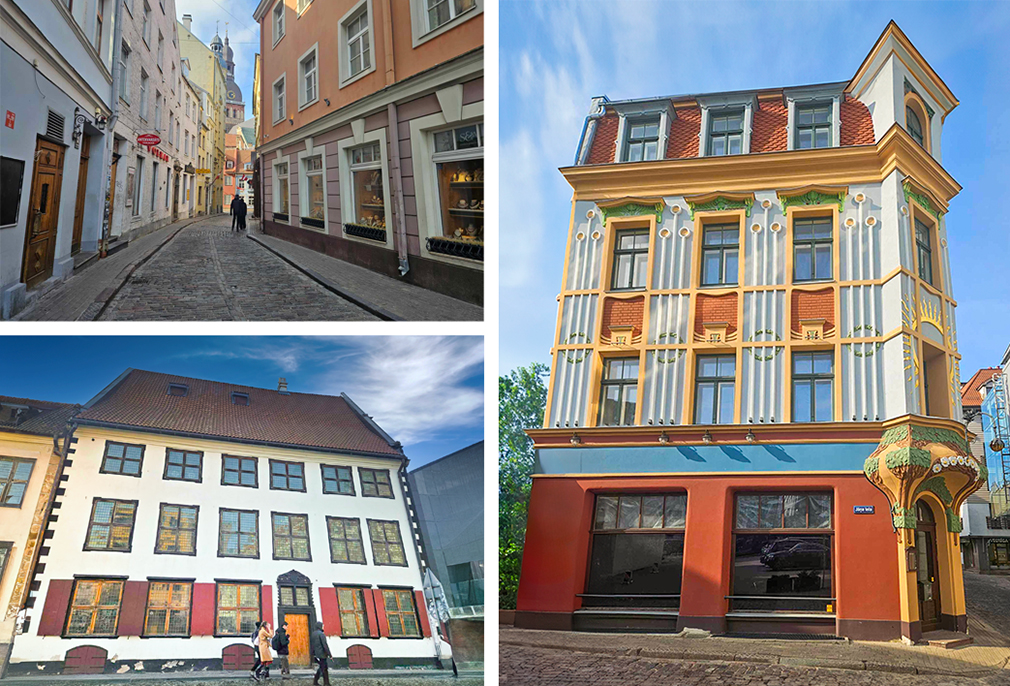
Things to Do in Riga
Visit the Living History Lesson of Riga’s Old Town
The UNESCO-listed historic center of Riga should be the first stop on any tourist itinerary of the Latvian capital. Its public and residential buildings date from medieval to modern times alongside a cluster of impressive churches—a living testament to the gradual growth of a city. Head to Dome Square and check out the largest place of worship in the Baltic region. Riga Cathedral is home to an enormous organ with 6,718 pipes, which inspired classical composer Franz Liszt to create a piece of music in its honor. Another sacred space of note is St. Peter’s Church. Here you can ride an elevator inside its impressive tower to a platform for an amazing view over the old town and beyond.
Explore Riga’s Museums, from Classic to Quirky
Riga has some wonderful museums to discover, so once you’ve explored its history at the National History Museum and marveled at the vast collection of work by Baltic artists in the glorious building of the Latvian National Museum of Art, it might be time for something a little different. One unusual museum worth a visit is situated on Albert Street—a road named after Bishop Albert, the founder of the city. This street has arguably the best concentration of Art Nouveau buildings and is also home to the wonderful Riga Art Nouveau Center, a faithfully restored and furnished apartment giving a glimpse into how people lived at the turn of the 20th century.
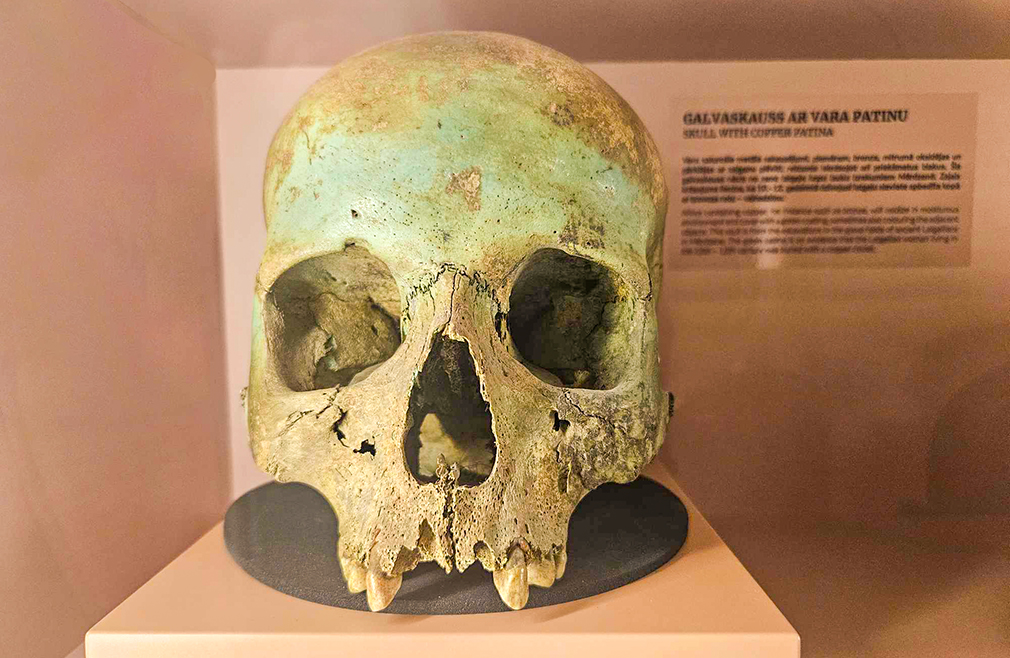
Perhaps the most unusual exhibition in the Latvian capital is to be found at the RSU Anatomy Museum, where a 100-year-old collection of healthy and diseased body parts is respectfully curated to create an informative display for the general public. Recently opened in the summer of 2021, this curious collection is arranged over two spacious floors in a former stable, on the grounds of the Faculty of Medicine. The first floor of the museum focuses on bones and organs, and the lower floor on embryology. Prepare to see human specimens displayed alongside temporary art installations.
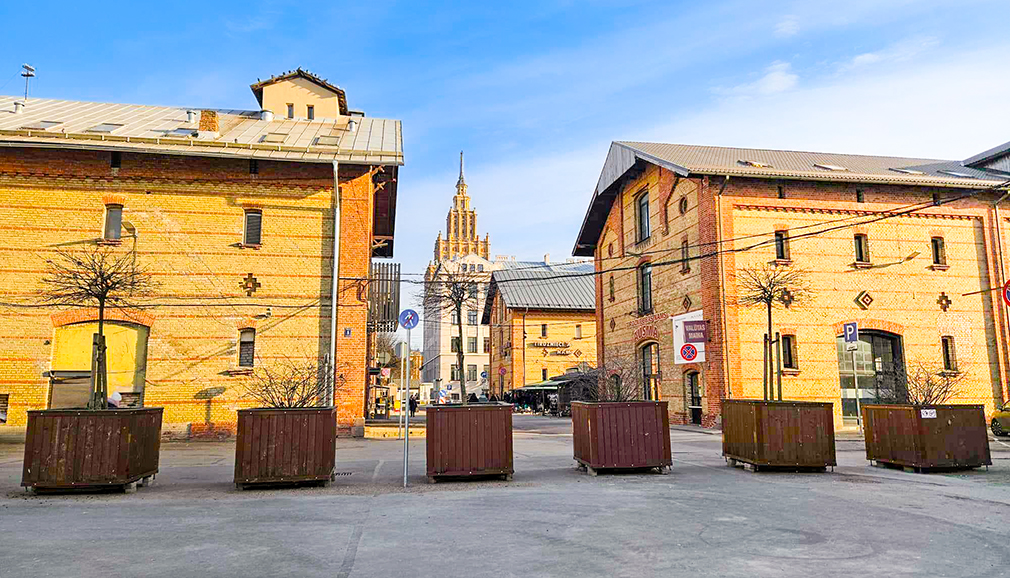
Walk Through Streets Less Traveled in the Company of a Local Expert
Take a tour in the company of a history expert through lesser-known areas of the city. Away from the historic center, let your guide take you across town, through the former ghetto, to explore the industrial areas. Along the way, enjoy discovering local artistic spots, cafes, shops, galleries, and churches. Want to see Riga from the top of the Communist-era Sciences building? Or to visit other Soviet-era buildings around the city? Just let your guide know and they will design a route to suit your interests.
Step Back into Riga’s Soviet Past at the Chilling “Corner House”
Explore the former headquarters of the Cheka—the Latvian branch of the KGB. After the military forces of the Soviet Union occupied Latvia on June 17, 1940, they took over a building on the corner of Stabu and Brivibas, making it the headquarters of their secret service. Known as the “Corner House,” this chilling venue became an interrogation center and prison, where Latvians suspected of being enemies of the state were questioned, tortured, and incarcerated. The building remained a secret until Latvia’s independence in 1991, when the KGB was declared a criminal organization and finally abolished in the country. The museum runs daily tours, taking visitors to cells, interrogation rooms, kitchens, and exercise yard, as well as the truly horrifying killing room.
Getting to Riga: airBaltic operates a codeshare with Delta Airways. You can also fly from any of these major European and MENA cities.




